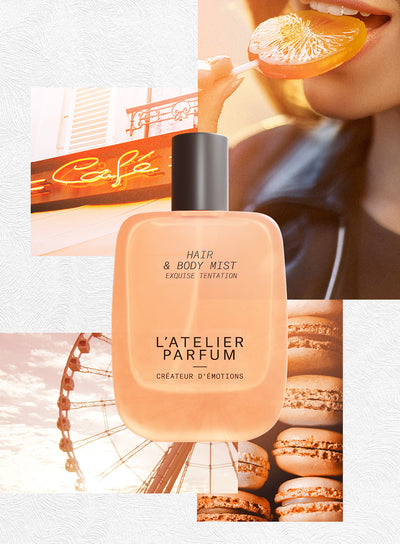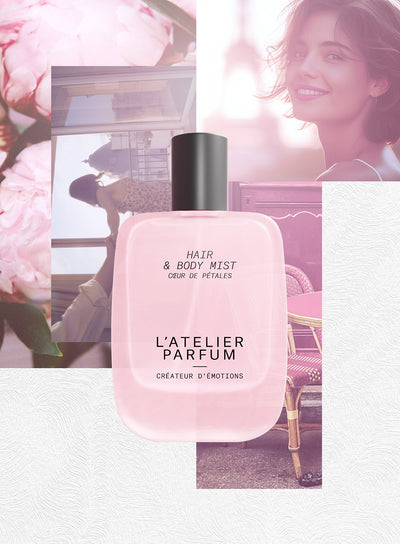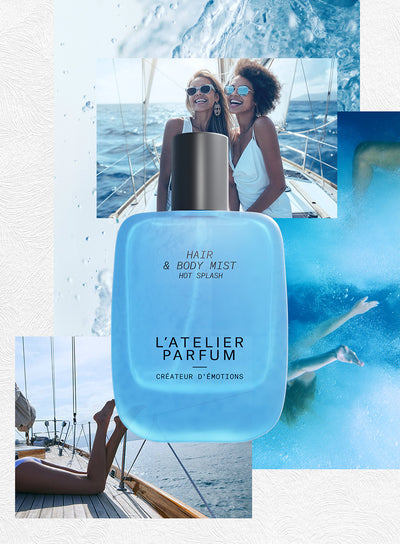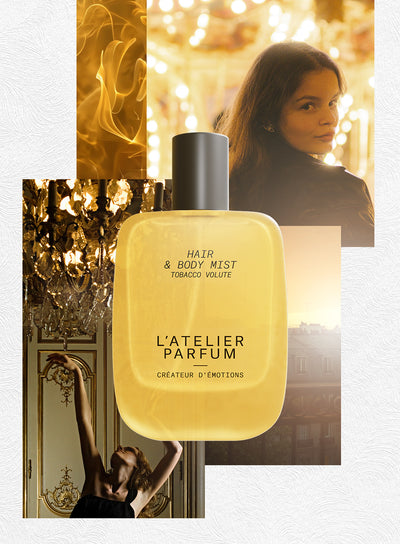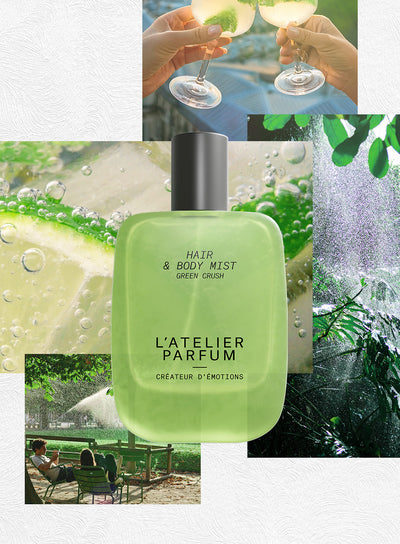Lavender: the Blue Soul of Perfumery

Lavender is one of the most emblematic raw materials in perfumery—a bridge between tradition, nature, and olfactory innovation. Originating from the fragrant hillsides of Provence, its trail—fresh, floral, aromatic, and powdery—has proven indispensable in both fine perfumery and in aromatherapy and wellness. Through its history, demanding cultivation, different species, and olfactory facets, lavender truly weaves a thread through emotions and the universal heritage of the senses.
Botanical Origin
Lavender belongs to the genus Lavandula, in the Lamiaceae family, comprising around thirty species of perennial plants with upright stems and blue or violet flower spikes. Native to the Mediterranean region, wild lavender carpets the sunny slopes of southern France, Italy, Spain, and North Africa. It generally blooms from June to August, painting the Provencal landscape with its famous blue fields, a true postcard of the summer’s “blue soul.”
The leaves are narrow, grey-green, and the stems bear flower spikes of small, highly scented blossoms rich in essential oil glands. This unique morphology has provided lavender with aromatic and medicinal virtues for millennia.
History of Lavender
Lavender has been known and used since Antiquity:
- Ancient Egypt: Used in embalming rituals and as a sacred perfume.
- Rome: The Romans scented their baths, clothes, and treated wounds with lavender (“lavare” meaning to wash in Latin).
- Middle Ages: Lavender featured in “Hungary Water,” Europe’s first alcohol-based perfume, and was used to purify the sick during great pandemics.
- 16th-19th centuries: Lavender became the olfactory signature of Grasse, the heart of French perfumery. It was distilled to produce the famous “eau de Cologne” and took a starring role in the Fougère family.
- In the 20th century, its olfactory profile conquered high perfumery, both masculine and feminine, and its image became linked to Provence, refinement, and authenticity.
Cultivation of Lavender
Cultivating lavender requires a sunny climate, poor, light, well-drained soil, and an optimal altitude of 600 to 1,500m for Lavandula angustifolia (true lavender).
Key steps:
- Planting in autumn or spring, in rows spaced to ensure aeration.
- Blooming from June to August, when the fields turn purple.
- Harvesting in July-August, always early in the bloom to preserve all aromatic molecules. Traditionally done by hand or sickle, now also mechanically.
- Selection: Only the flowering tops are processed.
Special attention is paid to crop rotation and biodiversity, ensuring ecological balance and plant longevity. Organic farming, respecting terroir, and peasant know-how are essential in Provence but also in the Balkans and some regions of Australia and North Africa.
The Different Species of Lavender
Perfumery distinguishes mainly four major species:
- Lavandula angustifolia
Common name: True lavender
Origin: France, England
Olfactory profile: Supple, floral, soft, refined. The star of high perfumery. The quintessence of floral softness, prized for delicacy and olfactory balance. - Lavandula latifolia
Common name: Spike lavender
Origin: Mediterranean, Spain
Olfactory profile: Powerful, camphorated, medicinal. Used for its fresh, cooling effect. Known for medicinal benefits (healing, pain relief), less often used pure in fine perfumery. - Lavandula stoechas
Common name: French lavender/Spanish lavender (butterfly lavender)
Origin: Southern Europe, Morocco
Olfactory profile: Intense, camphor-like scent, less noble in fine perfumery, ornamental use, raw fragrance. - Lavandula intermedia
Common name: Lavandin
Origin: Natural hybrid
Olfactory profile: Herbaceous, very aromatic, rawer scent. High essential oil yield, less sought after in high perfumery. More robust and fragrant, greater yield but cruder aroma.
This botanical diversity enriches the perfumer’s palette depending on the effect desired: from powdery refinement to rustic herbaceousness.
The Process of Transforming into Perfume Oil
Transformation is by steam distillation:
- Harvesting the flowering tops, immediately sent to the distillery to avoid oxidation of aromas.
- Loaded into a still: steam passes through the plant material, carrying the fragrant molecules.
- Condensation: the aroma-laden steam is cooled back into liquid.
- Separation: the essential oil, lighter than water, floats and is collected.
- Decanting and filtration ensure purity and strength.
Yield depends on the species and the quality of flowers: about 100 kg of flowers for 1 kg of true lavender essential oil. Lavandin gives much higher yields but a less subtle aroma.
CO₂ supercritical extracts and derivatives (absolutes) also exist, rare but ultra-concentrated, used in refined accords.
Olfactory Profile of Lavender
Lavender offers a unique, instantly recognizable olfactory palette:
- Top notes: fresh, lemony, slightly green, with a lively brightness.
- Heart: floral-powdery bouquet, honeyed softness, slightly herbaceous.
- Base: woody, musky, sometimes ambered nuances, discreetly camphorated depending on the species.
Its moderate volatility makes it a major note in the Fougère and Hesperidic families, but it also structures many soliflorals, florals, modern orientals, and even woody or aromatic compositions.
Blended with bergamot, rose, iris, sage, or vanilla, it adorns both classic colognes, great masculine scents, and contemporary feminines.
Lavender’s Effects on Mood, Emotions, and Psychology
Beyond its scent, lavender has been known since Antiquity for calming and therapeutic virtues:
- Sedative, relaxing: inhalation reduces stress, anxiety, encourages relaxation and deep sleep (supported by clinical studies).
- Balancing: helps mood, limits mental agitation, reduces rumination.
- Promotes creativity: its floral-woody aroma inspires calm and concentration.
- Reassuring, familiar effect: for many, it evokes cleanliness, innocence, childhood fields—acting as a powerful emotional marker.
In aromatherapy, lavender is used to relieve migraines, muscle tension, insomnia, and minor daily troubles. This soothing quality is found even in modern creations, where it invites pause and well-being.
Robertet’s Actions in Lavender Cultivation
The house of Robertet, pioneer in natural perfumery, has developed a highly responsible lavender supply chain:
- Complete traceability: selecting terroirs in Provence, plot-by-plot control, direct contracts with local growers.
- Support for organic farming and certification: partnerships with small producers to preserve biodiversity, limit pesticides, respect natural cycles.
- Extraction innovation: investments in mobile distillation units to enhance every micro-terroir and preserve aromatic freshness.
- CSR & biodiversity: protecting bees, combating Xylella fastidiosa (a bacterium devastating fields), campaigns to plant hedges and bee meadows.
- Social support: training aid for growers, ethical wages, and maintaining local jobs.
Robertet markets certified, natural essential oils and absolutes of lavender and lavandin, recognized for their olfactory fidelity. These efforts place the company at the forefront of sustainable and ethical perfumery.
Iconic Lavender-Based Perfumes
Lavender signs some of the greatest olfactory monuments—from timeless classics to contemporary reinventions:
- Jicky, Guerlain - 1889: Aromatic Fougère | Signature
- Pour un Homme, Caron - 1934: Fougère soliflore | Heart/Base
- Brin de Réglisse, Hermès - 2004: Aromatic Floral | Head/Heart
- Libre, Yves Saint Laurent - 2019: Modern Floral | Heart
- English Lavender, Yardley - 1913: Aromatic Floral | Soliflore
- Lavande Velours, Guerlain - 2024: Woody Floral | Heart
- Gris Clair, Serge Lutens - 2006: Woody Floral | Head/Heart
- Gris Montaigne, Dior - 2013: Musky Woody Floral | Heart
It spans the ages: from Victorian solifloral to dandy fougère, sunny cologne, classic masculine or rebellious feminine, to the latest woody and leathery scents.
L’Atelier Parfum Fragrances Containing Lavender
L’Atelier Parfum reinterprets lavender through fresh, solar, gourmand or sensual creations. Among the collection, the fragrance Hot Splash truly elevates lavender:
- Hot Splash: an astonishing combination of lavender and aquatic notes, highlighted by dynamic citrus and a musky, transparent trail. A modern, energizing perfume where lavender becomes a source of energy and freshness—perfect for summer.
Sources
Perfume Society – Lavender Ingredient Profile
Fragrantica – Lavender Note
Wikiparfum – Lavender
Musée du Parfum Fragonard – Lavender, the blue gold of Provence
Who What Wear – Best Lavender Perfumes
Conclusion
Lavender alone summarizes history, technique, and emotion—a symbol of the sun-drenched South, authenticity, and well-being. Versatile, it is by turns muse of great creators, a health ally, a sensory icon, and a pillar-flower of the global olfactory heritage.
In contemporary perfumery, its subtle nuances converse with woods, florals, spices, or citrus to create unforgettable fragrances. Thanks to the commitment of houses such as Robertet, lavender retains its place of honor: a blue, inspiring, infinite perfume, crossing generations without ever going out of style.

